I recently went to Corpus Christi, Texas for a family gathering. I decided to fly into Austin given that so many folks consider it a ‘city of the future’ - Richard Florida, Glen Murray et al.
From what I can remember of Florida’s “The Creative Class” Austin took what it had, a university town with a rep for great live music, and made a conscious gamble that the future was not in bricks and mortar, financial incentives for manufacturers and other traditional urban infrastructure. Instead, tehy thought that the future was in people.
Give young people a cool, interesting, wi-fi’d, ‘weird’ place to live would not only keep them there but attract like-minded people. Once you had a certain concentration of those types of folks the “new economy” companies (IT, ad agencies etc.) would come and seek Austin out as a place that would make their companies a success.
Some of that worked. Dell and other IT companies, ad agencies and others have headquartered there. People who graduate from the U of T tend to stay put after graduating making Austin one of the most 'intelligent' cities in NA by education levels. Because these jobs pay well they have a better than average income compared to other NA cities. It's also one of the youngest NA cities in terms of population.
Austin went from 465,000 in 1990 to 650,000 in 2000 and by 2010 it’s projected to be 800,000 - in other words, they get about 20,000 additional people per month residing there.
Here's a little tour of Austin and comparison to some of Winnipeg's spaces:
First off is 6th Street. It’s a strip of bars, shops, clubs that usually feature live music, jams, and cheap beer.
An interesting area that features a mix of rich and poor, old and young. What I thought was interesting, though, is that the strip that made Austin famous as a music city is not all that done up. It resembles Winnipeg’s Selkirk or Main Street more than the Exchange or Calgary’s Stephen Ave.
I did note that there wasn't a lot of people living immediately in the district. It is surrounded by some hotels and for the most part office buildings.
There are a lot of open air bars (windows that open onto the streets) with few patios due to narrow sidewalks. There are very few parking lots or vacant lots.It all made for a nice, walkable strip.
I did not get the sense that it was overly planned or funded (other than the city obviously did not allow the strip to be torn down). It just seemed to sort of "happen".












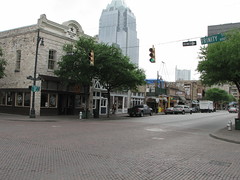
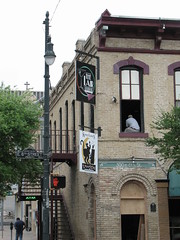
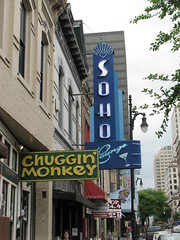
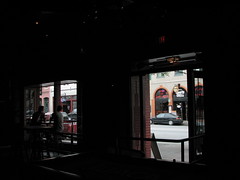
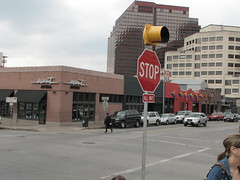
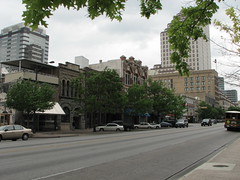
No comments:
Post a Comment